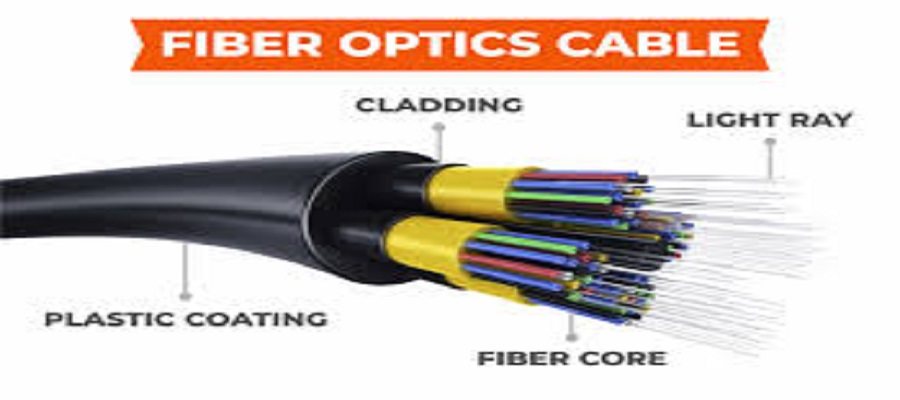E-Business
HP Reinventing Classrooms with ‘ProBook x360 11 EE’ Thinnest Convertible PC

Remember school computer labs? Those shared-tech spaces often had the ambiance of a musty library and typically held a collection of also-ran computers that were far from the leading-edge of personal computing.
Today’s kindergarten-through-high school students – the so-called digital natives who know how to use a touchpad before they use a spoon – have radically different touchpoints with their tech.
Still, budget-strapped school districts often find themselves investing in low-end computers that don’t always hold up in classrooms or struggle to support new, digital teaching methods.
That’s why HP has built an affordable, durable and fully functional learning PC – the HP ProBook x360 11 G1 Education Edition, powered by Windows 10.
The device, which was announced Tuesday, responds to a shift that is being recognized in classrooms across the country. Classrooms are increasingly transitioning from traditional lecture-based methods to “blended learning” experiences, where technology is at the forefront and small groups of students rotate between different stations on various subjects.
For example, some might be doing projects on the floor with tablets while others huddle around desktop computers or use laptops to collaborate online with students at different schools.
Most teachers say they are using technology in these ways every day with their students, and they expect to step it up in the coming year, according to a survey by Front Row Education.
“The education market is a strategic growth area for HP,” said Gus Schmedlen, vice president, Education at HP. “We pay close attention to the unique needs of students, teachers and schools because they are enabling the next generation of inventors, leaders and future employees to go beyond note memorization and master creativity, collaboration and critical thinking.”
HP is a big player in the education market, having shipped 4.8 million PCs into schools and universities during fiscal year 2016, according to IDC’s Worldwide Quarterly PC Tracker (2015Q4 to 2016Q3).
Built for Schools
Durability was an immediate design priority because, with blended learning, students are constantly transporting computers, increasing the odds of dropped equipment. With that in mind, HP took steps to make the HP ProBook x360 11 EE the world’s thinnest, most rugged convertible PC.
It’s encased in hard, industrial rubber and its screen features optional damage-resistant Corning Gorilla Glass. HP engineers put the computer through its rigorous HP Total Test Process, which involved dropping hundreds of computers from an elevation of up to 30 inches (about the same height as an average school desk) to make sure they could take a beating.
The device is built around Windows 10 Anniversary Update, which delivers a wide variety of innovation for the modern classroom. This new operating system enables educators to get up-and-running quickly, which is important because nearly half of U.S. teachers serve as their own tech support in classrooms.
And Windows 10 is considered the most secure OS from Microsoft yet, which can help schools prevent costly network breaches. There’s even an app called “Take a Test,” which includes simple yet secure features for modern test-taking.
“We collaborated with Microsoft on the HP ProBook x360 11 EEbecause they are helping to redefine classroom learning,” said Schmedlen. “Teaching has changed dramatically over the past few years, and we believe we’ve created a solution that will adapt and enhance the education of young minds everywhere.”
Designed for Learning
But first and foremost, HP designed the HP ProBook x360 11 EEto enrich student learning. The new computer includes many of the features that are found in consumer or business devices, such as Microsoft Office OneNote. But it also has some student-friendly benefits as well.
“It is the world’s only convertible laptop with a dual camera system, which HP calls Explorer Mode. Explorer Mode is used for project-based learning and content creation and uses an optional 1080p FHD camera embedded on the keyboard deck to let students take video in tablet mode while viewing in real-time.”
There’s also an active penfor math, note-taking, annotation and art. And the standard touch screen interface is easier than a mouse for young children to manipulate.
E-Business
FG Mulls Fibre Optic Layout to Bridge Internet Gaps

President Bola Tinubu said that his administration has initiated a project to install fibre optic cables across the country, aimed at enhancing the socio-economic development of Nigeria.

His plans were contained in a speech he delivered at a joint session of the National Assembly in commemoration of Democracy Day on Thursday, June 12.
He said the fibre optic layout is part of other projects being embarked on.
“In addition, we have embarked on an ambitious project to lay fibre optic cables across the nation, a transformative step toward bridging the digital divide and fostering greater connectivity.
“This initiative promises not only to enhance the speed and reliability of internet access but also to revolutionise how businesses operate, how students learn, and how communities stay connected,” Tinubu stated.
He maintained that by extending this critical infrastructure, his government is empowering entrepreneurs, enabling digital education, and providing the tools for our youth to compete in a globalised world.
In a most recent report on Internet connectivity, The ICIR pointed out how Nigeria has faced setbacks in its deployment of fibre optic cables and needs a transformation.
The challenges revolve around vandalism, inadequate coordination between road construction and telecom infrastructure, and varying right-of-way (RoW) charges across states.
Among industry experts, these issues impact network outages, increase repair costs, and hinder broadband expansion efforts.
It has also further threatened the digital economy, leading to slower Internet speeds, dropped calls, and unreliable connectivity among others.
E-Business
African Startups Raised $345m in Funding in May

African startups raised more than $345 million across 65 deals in May, more than double the amount raised in the same period of last year, according to a report by Briter, a research and business intelligence firm.

The report disclosed that both the number of deals and participating companies declined, confirming a growing trend of fewer companies raising funds in larger sizes.
It said fintech attracted the highest share of funding in May, accounting for 34 percent of the total, while cleantech followed closely, driven by a debt deal from Sun King. The company raised $80 million (in local currency) to expand clean energy access in Nigeria.
“Equity remains the primary instrument in terms of total value. There’s no doubt about it; in fact, equity deals with disclosed amounts captured more than half of the total funding volume in May.
“However, debt financing is increasingly proving its weight. Although it accounted for only 8 percent of all deals, it represented 32 percent of the total funding, highlighting the typically larger size of debt transactions. With the rise of specialised vehicles targeting early-stage businesses, debt is becoming an increasingly important part of Africa’s innovation funding landscape,” it said.
Briter’s report added that grants continued to play a vital role in early-stage support, especially in the education technology (EdTech) sector. The Mastercard Foundation led the pack in grant activity, funding a new cohort of EdTech innovators in Nigeria and Kenya. Each selected startup is set to receive $100,000 in grant funding, in addition to mentorship and business development support.
Multilaterals also made a strong showing in May, it said. The Multilateral Investment Guarantee Agency (MIGA), a World Bank Group member, issued a $179.6 million guarantee to CleanTech firm KOKO Networks. The support will help scale its clean energy solutions across Kenya.
“This deal not only demonstrates growing international confidence in African climate ventures but also signals a promising pathway for other asset-intensive startups in clean cooking, agriculture, and renewable energy,” the report said.
From a geographic perspective, Egypt emerged as the continent’s fundraising powerhouse for the month, contributing 51 percent of all funding raised. The country recorded 12 deals across equity, debt, and bond instruments. Notably, FinTech platform MNT-Halan raised $50 million through a bond issuance, further illustrating the diversification of capital-raising mechanisms in the region.
Outside Egypt, funding was distributed across Africa’s three other key markets, which are Egypt, Nigeria, and Kenya, with limited activity recorded in countries such as Ghana, Tunisia, Morocco, and Uganda, each registering between one and three deals.
In terms of exits, the African tech landscape continues to mature. Three companies—Baobab+, Qardy, and Shopa—were acquired in May, bringing the total number of exits this year to 22. This already surpasses last year’s count for the same period. Qardy was acquired by Catalyst Partners Middle East (CPME) in a disclosed deal valued at $23 million, the report added.
E-Business
Human Hacking: When Cyber Criminals Target You

By Nancy Werteen
When you get anti-hacking advice, you’ve probably heard “Don’t use a simple password,” or “Don’t plug in that USB you found on the ground.”

But there’s one form of hacking that doesn’t always require a computer, and it costs businesses about 4.88 million dollars a year.
Modern hackers aren’t trying to get into your computer; they’re trying to get into you.
“They’ll try to learn about you a little bit, and they’ll try to use that information against you to try to get you to complete some action, maybe to send somebody some money,” said Kevin Moran, PhD, Assistant Professor of Computer Science, Cyber Security and Privacy Cluster, University of Central Florida.
IBM calls this human hacking, because it exploits human error instead of system error.
“With people just being busy and maybe not very carefully checking some of the emails or the phone calls that they get, can be something unfortunately that people can fall victim to,” said Moran.
Also known as social engineering, this often takes the form of phishing, where the hacker tries to “fish” the information out of you by impersonating family, friends, or even your bank.
There’s also baiting, where the hacker baits you with something of value. Remember the Nigerian prince scam?
That’s a famous example of baiting. There’s also pretexting, where the hacker will claim the victim has already been hacked, and that the hacker can fix it if you just send over your passwords. So, what can you do?
“Just as a rule of thumb, instead of clicking on links and emails, just go to the website yourself. And that will prevent, a lot of these types of attacks from happening,” explained Moran.
Phishing can take many forms.
Spear phishing targets people with access to confidential information, often to get access into an entire business, and whale phishing targets CEOs or political figures.
Search engine phishing is when hackers create fake websites promising services or goods you’ll never receive.
Angler phishing is when hackers create fake social media accounts impersonating famous people or companies.
Finally, vishing and smishing is phishing done through phone calls and texts respectively.

 General News23 hours ago
General News23 hours agoAfDB to Provide $184.1mfor Africa’s Largest Solar Energy, Battery Storage Project

 News3 days ago
News3 days agoCDCFIB Warns against Recruitment Racketeers

 Telecom3 days ago
Telecom3 days agoMeta, FMCIDE Unveil AI Accelerator to Drive Innovation in Nigeria

 News3 days ago
News3 days agoFG May Forfeits $4m from World Bank Loan over Audit Flop

 Telecom3 days ago
Telecom3 days agoNigeria Leads the Charge in Green Innovation @MTN’s Africa PachiPanda Challenge

 Broadcasting3 days ago
Broadcasting3 days agoAfia TV and Radio Stamps Footprints in Lagos

 E-Financial3 days ago
E-Financial3 days agoNDIC Begins Final Settlements to Creditors of Liquidated Premier Bank

 Telecom2 days ago
Telecom2 days agongCERT Issues High Alert to Nigerians Using Android Phones
















